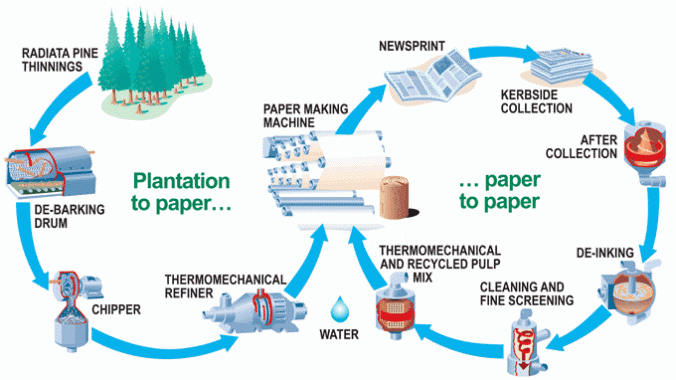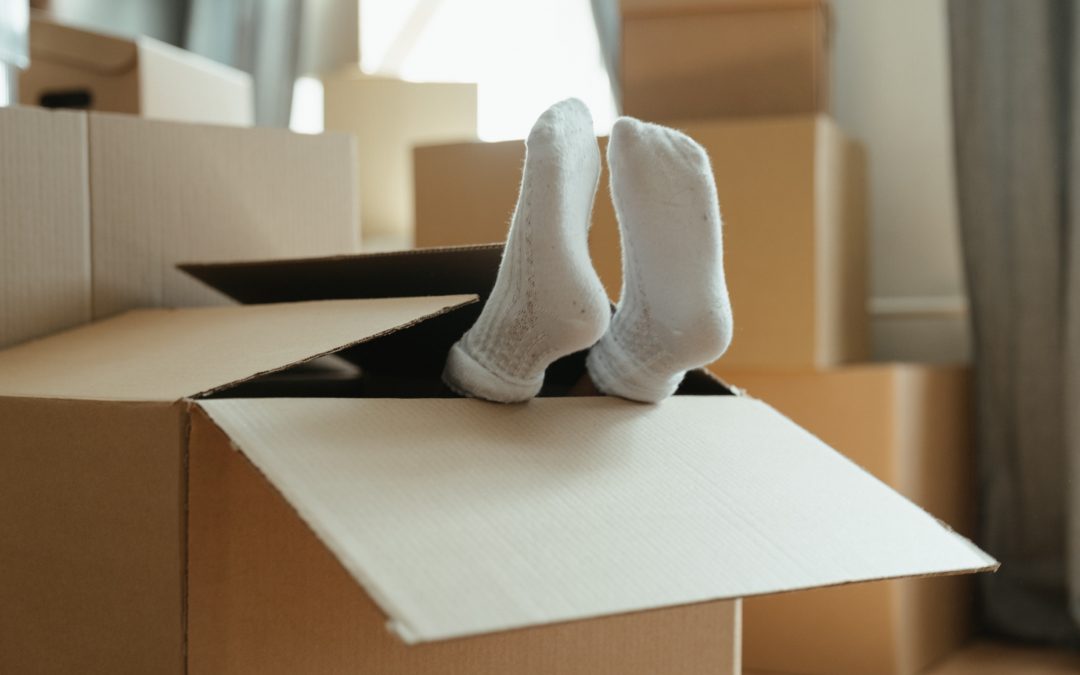The life of a cardboard box is short-lived.
When was the last time that you left a cardboard box sitting in your home unopened, taking up space? This is likely not a super common occurrence for you for two reasons:
- You’re too excited to see what is inside that cardboard box, and
- It takes up space, so do you really want that in your hallway to trip over?
Cardboard boxes never really stay in the same place for very long.
Instead, the moment they land at a destination, they tend to get unpacked quickly and then either repacked (sometimes) or immediately broken down and taken to a recycling bin (hopefully) or to a waste bin.
An overview of what this may look like:

The step-by-step cardboard recycling process from the EcoMasteryProject
Is cardboard really worth all the hassle then–monetarily and environmentally–if it lives such a short life?
Let’s dig into this…
How is cardboard made?
Overall, making a cardboard box is a relatively simple process. There are two main types of cardboard: regular and corrugated.
Regular cardboard typically refers to a thick paper stock or heavy paper pulp. This type of material is typically used for cereal boxes or greeting cards. It is basically made up of a flute (made up of virgin or recycled paper), sandwiched between two liners.
Making corrugated cardboard is a slightly different process that involves cutting, folding, and gluing corrugated cardboard sheets into your desired shape.
- Paper is first made from wood pulp or recycled paper, and then it’s treated with various chemicals to make it stronger and more durable (i.e. regular cardboard)
- The paper is then fed through a machine that adds the wavy middle layer, which is called corrugation. This process involves feeding the paper through a set of rollers with wavy ridges, which creates the characteristic ridges and valleys of corrugated cardboard.
- The corrugated cardboard is then cut into large sheets, which are sent to a box-making plant.
- At the box-making plant, the sheets are cut into the desired size and shape for the box.
- The cardboard is then folded along pre-scored lines to create the box’s shape, and the edges are glued or stapled together to hold the box in place.
- The finished boxes are then stacked, bundled, and shipped to various distributors and retailers.
And there’s a cardboard box.
Then, what happens to the cardboard?
Away she flies…
Literally and figuratively.
Over 90% of all products in the U.S. are shipped in corrugated cardboard boxes. Most cardboard today is corrugated cardboard, both for environmental reasons and because it is more secure.
Some of the environmental reasons include:
- Most is made from recycled materials
- It is easier to recycle post-consumption
- Can reduce need for secondary wrapping or packaging
Yet, corrugated packaging is a $17 billion per-year industry-the largest segment of the entire packaging industry.
That is a lot of money.
Is it really cost > environment?
Yes and no.
What would happen if you took your portion of your spend of that $17 billion each year from corrugated cardboard and moved to reusable packaging?
Specifically, you could
- Save 35% or more on packaging costs
- Allocate 35% or more on other initiatives
- Reduce your carbon footprint by 70% or more
It’s really a win-win.
Want to learn more about your reusable packaging options?
Schedule a free call with one of our Reusable Packaging Specialists. We can tell you in real-time what your actual cost savings and environmental impact will be as well.

